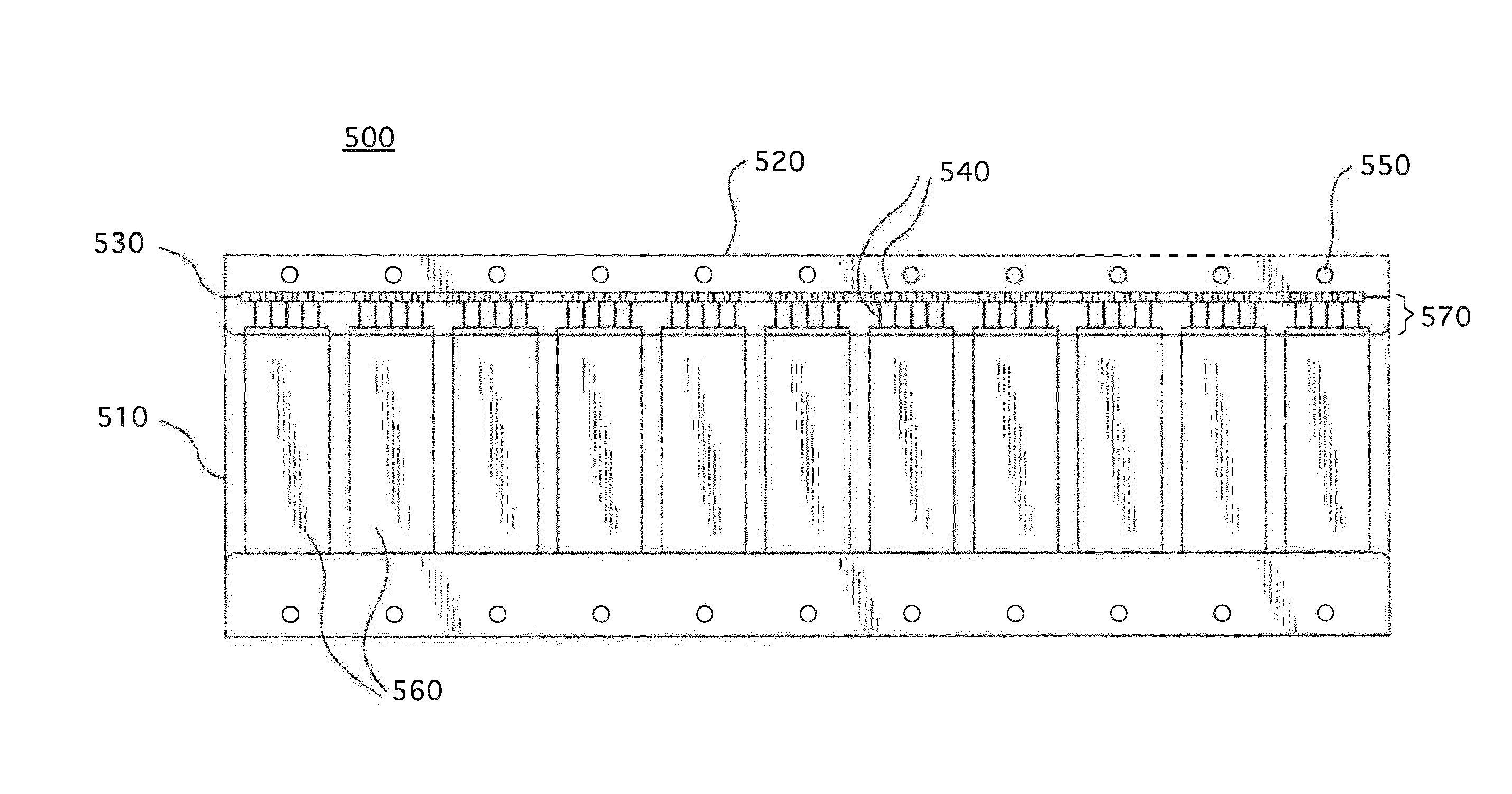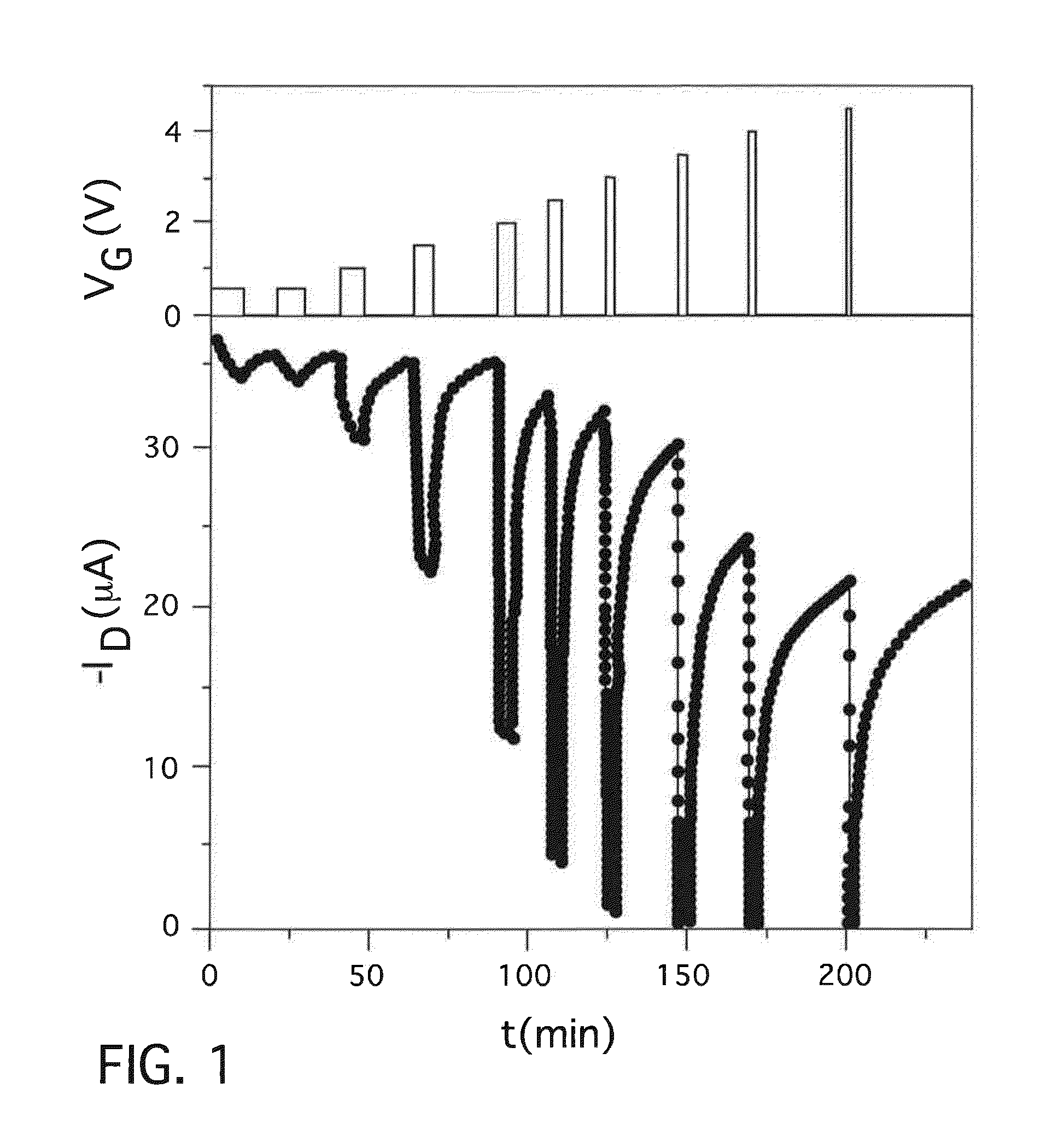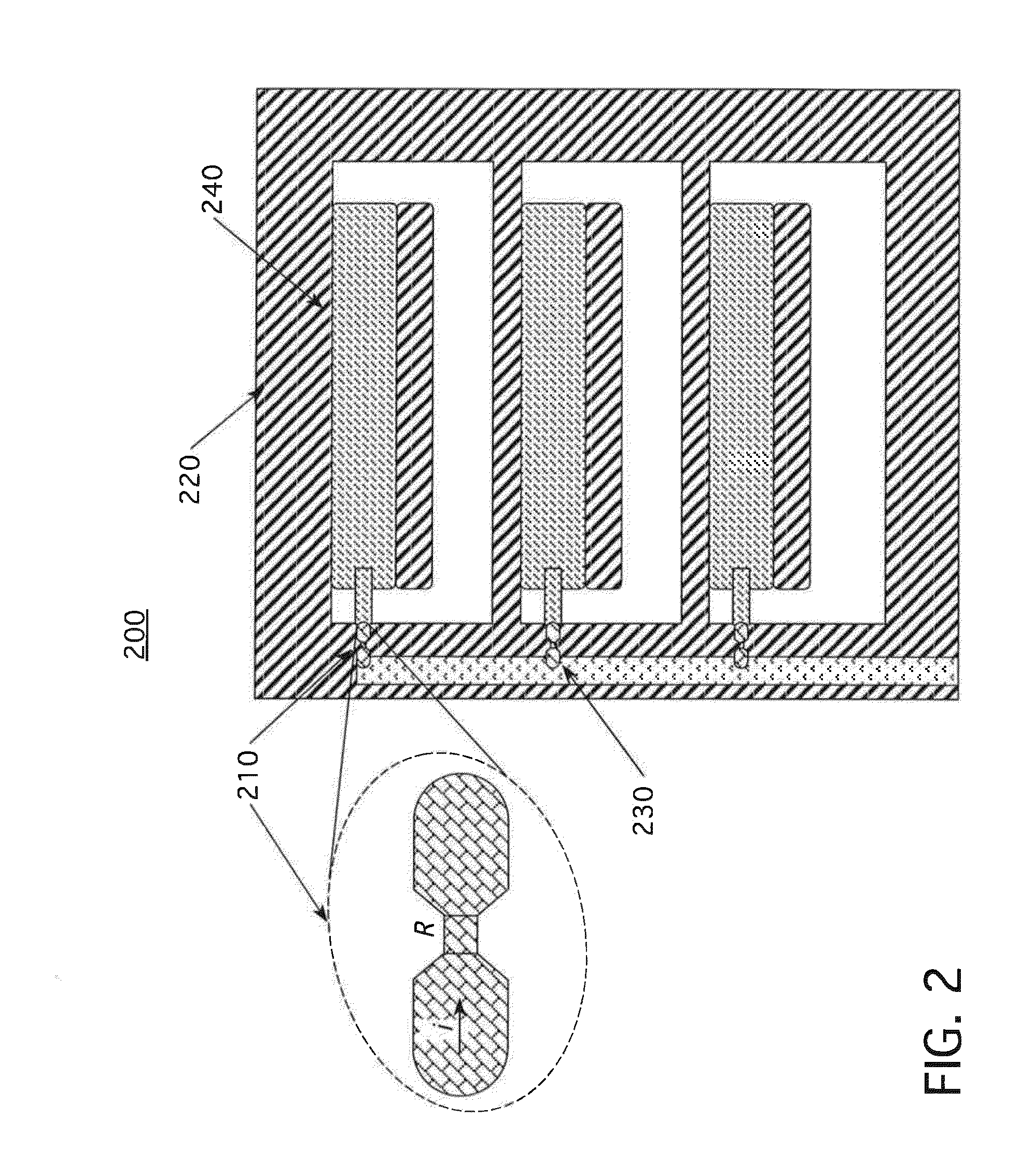Conductive polymer fuse
a polymer and polymer technology, applied in the field of printed electronics, can solve the problems of inability to disclose whether the fuse is encapsulated, the difficulty of depositing and patterning metal remains, and prior approaches to the problem (e.g., vacuum deposition, photolithography with a metal etchant), so as to improve improve the effect of printed electronic devices, and destroy the electrical conductivity of the polymer
- Summary
- Abstract
- Description
- Claims
- Application Information
AI Technical Summary
Benefits of technology
Problems solved by technology
Method used
Image
Examples
Embodiment Construction
[0059]Before explaining the disclosed embodiments in detail, it should be noted that the disclosed embodiments are not limited in application or use to the details of construction and arrangement of parts illustrated in the accompanying drawings and description. The disclosed embodiments may be implemented or incorporated in other embodiments, variations and modifications, and may be practiced or carried out in various ways. Further, unless otherwise indicated, the terms and expressions employed herein have been chosen for the purpose of describing the illustrative embodiments for the convenience of the reader and are not for the purpose of limitation thereof. Further, it should be understood that any one or more of the disclosed embodiments, expressions of embodiments, and examples can be combined with any one or more of the other disclosed embodiments, expressions of embodiments, and examples, without limitation. Thus, the combination of an element disclosed in one embodiment and ...
PUM
| Property | Measurement | Unit |
|---|---|---|
| temperatures | aaaaa | aaaaa |
| thickness | aaaaa | aaaaa |
| applied voltage | aaaaa | aaaaa |
Abstract
Description
Claims
Application Information
 Login to view more
Login to view more - R&D Engineer
- R&D Manager
- IP Professional
- Industry Leading Data Capabilities
- Powerful AI technology
- Patent DNA Extraction
Browse by: Latest US Patents, China's latest patents, Technical Efficacy Thesaurus, Application Domain, Technology Topic.
© 2024 PatSnap. All rights reserved.Legal|Privacy policy|Modern Slavery Act Transparency Statement|Sitemap



